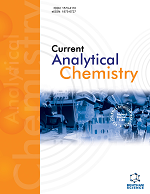
Full text loading...
We use cookies to track usage and preferences.I Understand

Diabetes mellitus is a significant, chronic disease that occurs when the pancreas cannot produce sufficient insulin or the body's capacity to use insulin is hindered. Traditional herbal remedies have played an important part in health systems worldwide and are used to treat various acute and chronic illnesses with or without minimum side effects. Diabetic patients have traditionally relied on herbal treatments to manage their diabetes. In India, where the prevalence of diabetes is rising, traditional herbal treatments continue to play a crucial role in diabetes management, particularly in rural and marginalized regions with restricted access to modern healthcare. A significant number of diabetes patients in India persist in using these herbal remedies, derived from Ayurvedic and traditional methodologies, owing to their accessibility, cost-effectiveness, and negligible adverse effects. Various medicinal plants with anti-diabetic properties in India are Acacia arabica, Aloe vera, Azadirachta indica, Ocimum sanctum, Pterocarpus marsupium, Tinospora cordifolia, and Trigonella foenum graecum, etc. These plants have been included in various research and publications linked to the antidiabetic properties of medicinal plants, both in vivo and in vitro. All of these plants have variable degrees of hypoglycemic and anti-hyperglycemic action. Furthermore, more research is needed to support the use of these medicinal herbs as an antidiabetic drug.

Article metrics loading...

Full text loading...
References


Data & Media loading...
Supplements